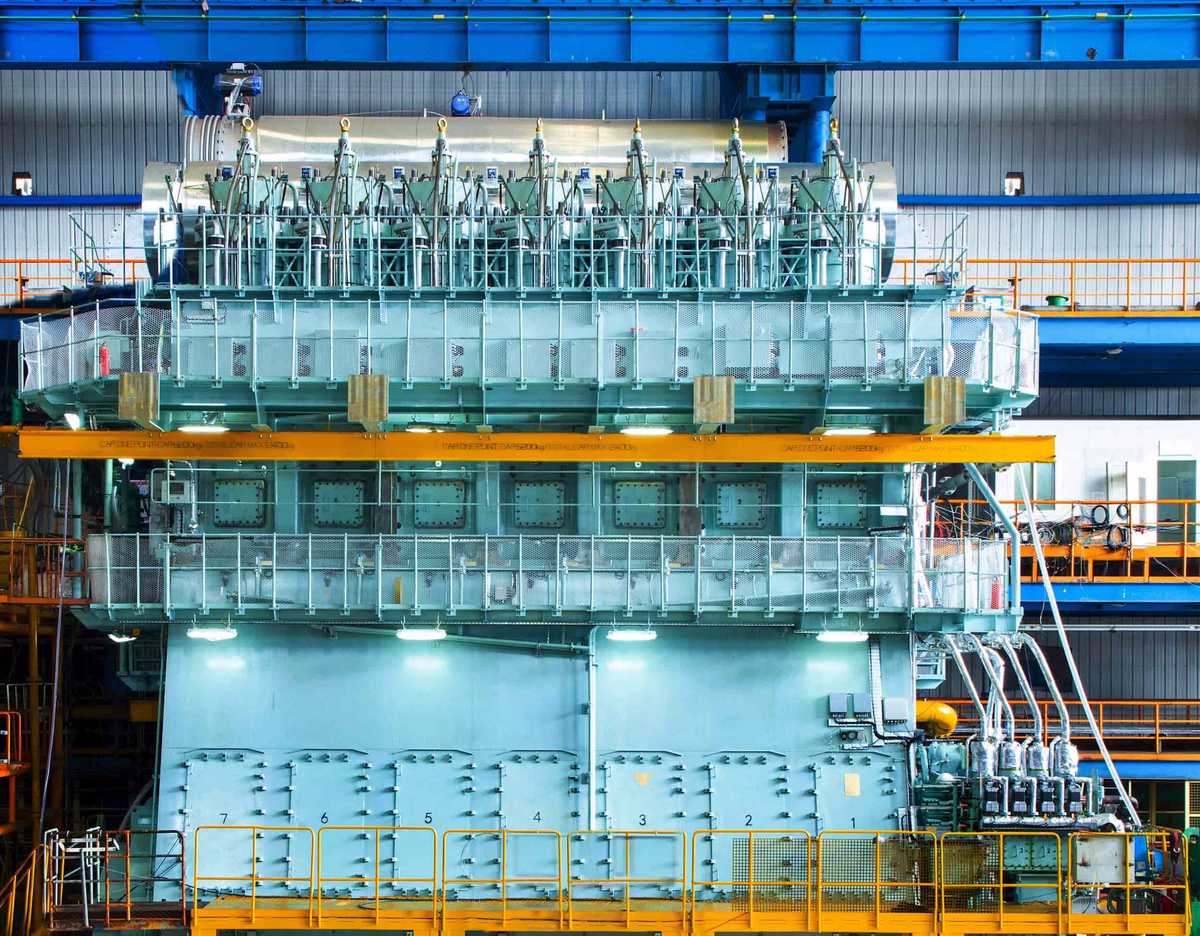Climate orgs seek transparency on ammonia engine emissions
Climate organisations urge global marine engine manufacturers to be more transparent about how much nitrous oxide and stray ammonia emissions their ammonia-powered engines have.
 PHOTO: Model of WinGD's dual-fuel ammonia marine engine. WinGD
PHOTO: Model of WinGD's dual-fuel ammonia marine engine. WinGD
Marine engine manufacturers should provide “detailed empirical data” on nitrous oxide and stray ammonia emissions, argue US-based non-profit Environmental Defense Fund (EDF) and German non-profit The Nature and Biodiversity Conservation Union (NABU) in an open letter.
The data can be expressed as “rates in grams per kilowatt hour or as a percentage of fuel consumption for a wide range of load points – from 5% to 90%," they say.
The data will be crucial to identifying potential downside risks associated with using ammonia as a marine fuel, said Sönke Diesener, senior transport policy officer at NABU. It will assist in finding the "right technical solution" when creating an ammonia-related regulatory framework, he added.
"Complete and transparent information on emissions from ammonia-powered engines is critical to accounting for the full lifecycle emissions of ammonia – from its production to its end-use – and understanding its true climate impacts as a shipping fuel,” said Natacha Stamatiou, senior analyst of global shipping at EDF.
Many colours of ammonia
Grey ammonia has a high emission factor because of its fossil origin. In the EU's FuelEU Maritime regulation, grey ammonia produced from natural gas emits 121 grams of CO2-equivalent per megajoule (121 gCO2eq/MJ) on a well-to-tank basis. This is higher than fossil heavy fuel oil’s emission factor of 13.5 gCO2eq/MJ and LNG's emission factor of 18.5 gCO2eq/MJ.
Ammonia's tank-to-wake default emission factor has yet to be defined in FuelEU Maritime.
Green ammonia has virtually zero well-to-tank emissions when it is produced from green hydrogen and nitrogen with electricity sourced from renewable energy as an input. It does not, however, have zero tank-to-wake emissions. In part, this is because burning ammonia as a fuel emits nitrogen oxide (NOx) emissions.
NOx has a shorter atmospheric lifetime compared to carbon dioxide (CO2), but it is a more potent greenhouse gas (GHG) with significant environmental impacts. Nitrous oxide (N2O), a major component of NOx emissions, has a global warming potential (GWP) that is 298 times greater than CO2 over a 20-year period, according to the EU's Renewable Energy Directive (RED II), which also applies to FuelEU Maritime.
NOx released into the atmosphere also contributes to the formation of smog and acid rain and affects the tropospheric ozone layer.
Another reason is that ammonia needs pilot fuel for ignition since ammonia's high auto-ignition temperature makes it difficult to burn readily or sustain combustion. Two-stroke ammonia engines need around 5-20% pilot fuel, while four-stroke engines may require as much as 30%.
By Konica Bhatt
Please get in touch with comments or additional info to news@engine.online





